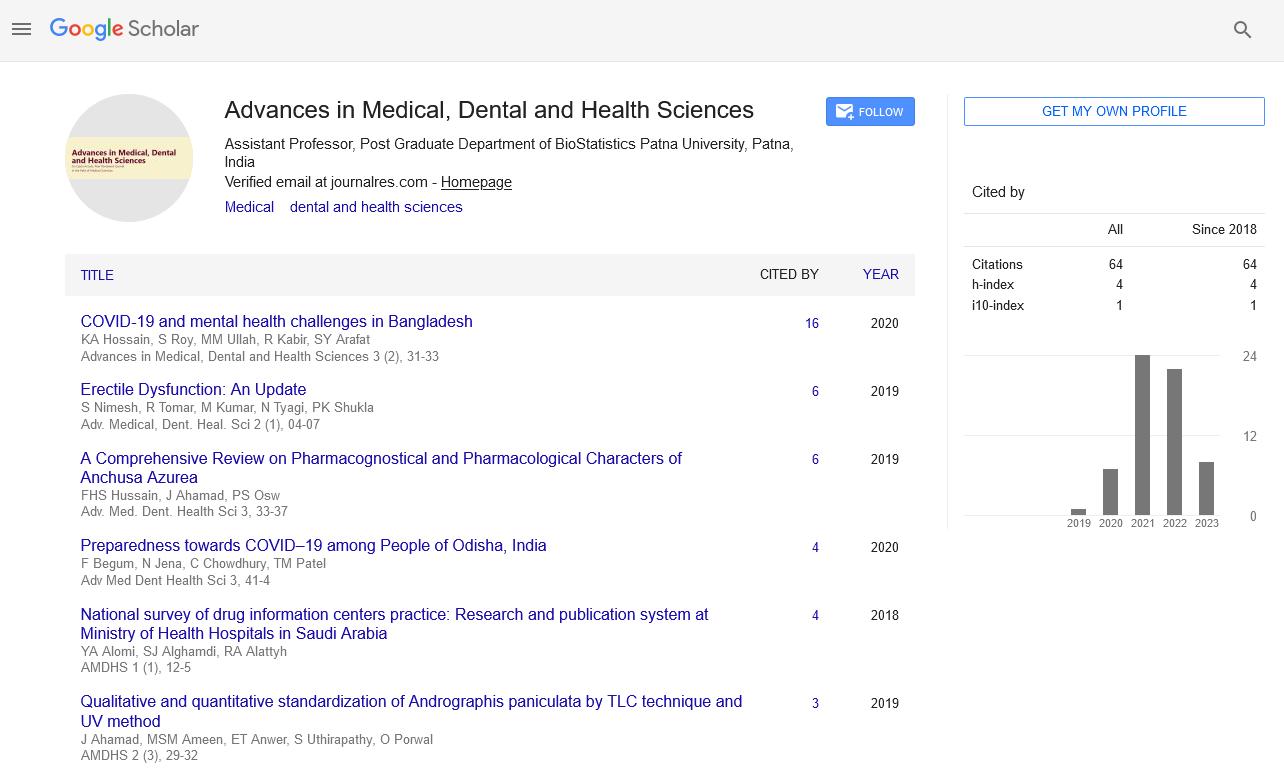Outcome of LCP in Treating Diaphyseal Fractures of Radius and Ulna in Adult Patients
Abstract
Author(s): Mushfique Manjur*, Rafia Afreen Jalil and Monaim Hossen
Background: LCP can be used in forearm fractures in the conventional plating technique (compression method - principle of absolute stability) for simple transverse or oblique fracture with low soft tissue compromise or in the bridging technique. Locking compression plates have been shown to provide a stronger fixation and perform better than the DCP in older or osteoporotic bone.
Objective: To evaluate the outcome of LCP in treating diaphyseal fractures of radius and ulna in adult patients.
Methods: This prospective observational study was conducted at National Institute of Traumatology and Orthopaedic Rehabilitation from January to December 2018. Patients with diaphyseal fracture of both bone of forearm, aging 50 years and above, were study population. Total 44 cases were included. Clinical, radiological and functional outcome were assessed and followed up for 24 to 30 (Average 25.27 weeks ± 1.39 weeks). Final functional outcome was done with Anderson criteria.
Results: Total 44 patients involved in this study were followed up to one year. Maximum age incidence was found in 51 years-55 years of age. The mean age of the patients was 58.27 years ± 5.68 years ranging from 51 years to 75 years. Out of 44 patients 35 (79.5%) were male and 9 (20.5%) were female. Male to female ratio was 3.86:1. Among 44 cases, 23 (52.3%) had left sided fracture and 21 (47.7%) had right sided fracture. In this study, motor vehicle accident accounted for 23 (52.3%) cases which was the most common cause of injury. Other causes were fall from height in 17 (38.6%) cases and physical assault in 4 (9.1%) in descending order. The mean radiological union time was 12.18 weeks ± 1.53 weeks with 1 case of non-union. Complications were found in 11.4% cases. The mean ROM of flexion-extension and supination-pronation were 133.530 ± 5.440 and 124.410 ± 11.190 respectively at last follow up. The mean Quick DASH score at last follow up was 14.6% ± 7.14%. Out of 44 cases, 22 (50%) were excellent, 21 (47.7%) were good and the remaining 1 (2.3%) was poor.
Conclusion: In concluded, use of LCPs represents an effective treatment in terms of union rate, pain and functional outcomes. The major mechanism of these fractures is Motor vehicle accident. Most common fractures in left-side. In this study, the surgical outcomes were excellent in 50% of cases, 21 (47.7%) were good and the remaining 1 (2.3%) was poor. Internal plating gives good functional results in the treatment of forearm diaphyseal fractures, as long as the surgical technique is perfect.
